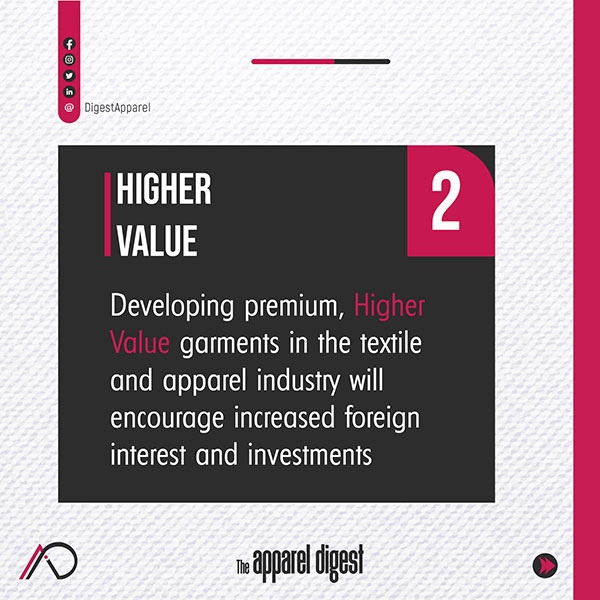The Apparel Digest Report
According to the findings of GlobalData, a prominent data and analytics company, Shein emerged as the most successful player in the worldwide apparel market in the year 2024. A market share of 1.53 percent was achieved by the Singapore-based fast fashion behemoth, which increased its market share by 0.24 percentage points. In the entirety of the company, this was the most significant profit. Shein’s success can be attributed to the fact that it offers extremely low costs and reacts quickly to emerging fashion trends. Even though Shein continued to face criticism over labour practices and environmental issues, its strategy still helped it outpace the competition.

Shein’s explosive rise in fast fashion has shaken up the industry, pulling customers away from older players like ASOS and Boohoo, which have seen sales drop. Around the same time, platforms like Temu began gaining traction as well, adding even more pressure. This shift in where and how people shop has had a major impact on traditional brands. For example, Forever 21 filed for bankruptcy in 2019, citing intense competition and changing retail habits as key reasons.
Fast Fashion Performance

Zara, owned by the Spanish group Inditex, also increased its market share in 2024. There was a 0.05 percentage point increase for the brand, bringing its overall percentage to 1.24 percent. The local supply chain structure that Zara utilized allowed them to quickly react to developing fashion trends, which resulted in the company’s financial success. Zara’s broad appeal to a wide range of customers played a big role in its success.
H&M’s market share, on the other hand, experienced a slight decline, reaching 1.06%. As a result of product designs that were less compelling and more neutral, the firm was unable to maintain the interest of its customers. H&M’s lack of distinctive products, according to analysts, hurts the company’s ability to compete in a market that is becoming increasingly controlled by trend response. The company also experienced a loss of customers because of Uniqlo’s presence. The Japanese retailer saw its market share increase to 0.92 percent, which was underpinned by good opinions of value for money and smart growth beyond its native market.
Sportswear Shifts

After a challenging year in 2023, Adidas showed a remarkable ability to bounce back. In terms of market share, the German brand saw a growth of 0.17 percentage points, reaching 1.79 percent altogether. The continued success of the company’s originals lifestyle footwear line, which continues to be well-liked by consumers, was a contributing factor in this circumstance.
The market share of both New Balance and Skechers increased throughout this period. They have done well because their shoes are comfortable and easy to wear, and their creative partnerships with a mix of influencers and celebrities have also contributed to their success.
Despite this, Nike encountered challenges in the year 2024. Within the clothing industry, the brand saw the greatest loss of market share. A decrease of 0.15 percentage points brought its share down to 2.85%. Analysts say Nike’s dip came from a lack of fresh ideas and a fading sense of style appeal, which made it harder to keep up with competitors.
Luxury Market Landscape
The luxury clothing market experienced a mixed year, with top-tier brands continuing to perform well while more accessible luxury labels faced challenges. Even though the economy around the world was struggling, luxury brands continued to thrive. The market shares of Hermès and Chanel both increased to 0.55 percent and 0.59 percent, respectively, throughout course of the year. Analysts pointed out that wealthier shoppers weren’t as affected by the economic slowdown, so they kept spending on luxury fashion.
The performance of luxury brands that were more easily accessible was lower. The percentage of the market that Gucci holds fell by 0.10 percentage points, reaching 0.38. Following Sabato De Sarno’s departure from his position as creative director, the brand had a difficult time generating interest. His presentation of more subdued designs did not receive a positive response from customers. Additionally, in 2024, customers who are ambitious and frequently rely on savings to acquire high-end clothing were more financially constricted than they were in the previous year. Due to this, it became challenging for brands of this nature to sustain the same levels of demand as before.
In the year 2024, the apparel market was impacted by a growing disparity between companies who focused on value and those who focused on high-end products. Luxury brands that cater to the ultra-wealthy flourished based on exclusivity, in contrast to how businesses like Shein and Adidas attained success through adaptability and affordability. The year served as a wake-up call for brands that are aimed at the middle market, prompting them to modernize or risk falling behind.

